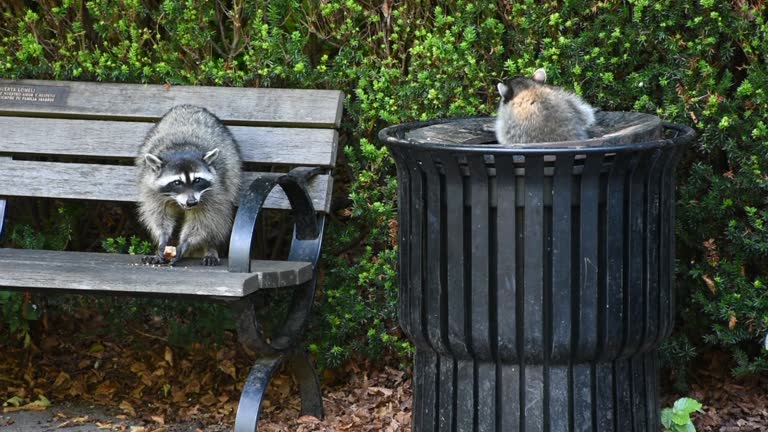Raccoon in the city Biology Diagrams How Do Raccoons Locate Food Sources In Cities? Raccoons are fascinating creatures that have adapted remarkably well to urban living. In this engaging video, A single raccoon can be a nuisance, but imagine the man in Kansas City who started out with one raccoon eating his dog's food. It wasn't long before the food attracted more and more raccoons until 30 were scratching on his door demanding food each evening. The man and his small dog were afraid to go outside, and he was afraid to quit feeding them. Raccoons are scavengers and omnivores, with a diet that includes nuts, fruits, insects, snails, fish and discarded food. When urban raccoons go looking for food they are attracted to bird feeders, ponds, and pet food. They are excellent scavengers, so dumpsters and garbage bins in urban areas are an attractive source of food. 3. Raccoons have

Food and feeding habitats. Raccoons will eat almost anything, but are particularly fond of creatures found in water—clams, crayfish, frogs, fish, and snails. Raccoons also eat insects, slugs, dead animals, birds and bird eggs, as well as fruits, vegetables, nuts, and seeds. Around humans, raccoons often eat garbage and pet food.

How Do Raccoons Locate Food Sources In Cities? Biology Diagrams
Raccoons have home ranges, but these can quickly be scrapped if food sources are low, raccoon populations are high, or predators are nearby. If a raccoon has moved in under your shed or deck in the middle of the city, it may stick around for its entire life unless you take away its source of food. Raccoons are nocturnal, so we rarely see them The Raccoon in the Food Chain. The concept of food chains and food webs is crucial for understanding ecological relationships. A food chain is a linear sequence that shows how energy passes from one organism to another through consumption. Within this chain, raccoons represent a middle-tier consumer, mainly feeding on fruits, insects, small

Raccoons are omnivores and play a crucial role in the food chain as both predators and prey. They help to control populations of smaller animals, such as rodents and insects, while also providing a food source for larger predators like coyotes and foxes. Raccoons also aid in seed dispersal and nutrient cycling through their foraging habits. Despite their importance, raccoons can sometimes Urban wildlife management challenges: Increased raccoon populations can lead to greater human-wildlife conflict, particularly when these animals scavenge in residential areas, leading to property damage or health concerns through waste contamination.; Ecosystem implications: While raccoons can help in cleaning up waste, their high numbers and dependency on human refuse can shift local

